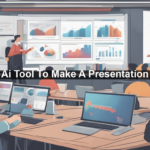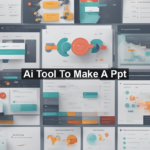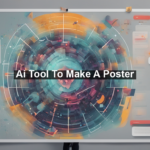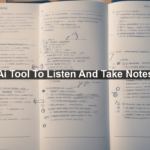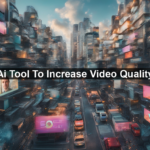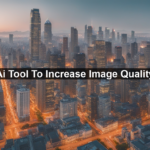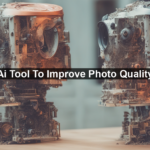Imagine a tool that could turn your imagination into reality with a few keystrokes. Sounds like magic, right? But that’s exactly what modern AI tools are capable of doing today. They take your text descriptions and transform them into stunning visual art. This breakthrough technology is not just a novelty; it has a far-reaching impact on art, design, marketing, and education, making it an essential topic to explore.
How Does an AI Tool That Draws What You Type Work?
Understanding the magic behind these AI tools requires a peek into machine learning and neural networks. These tools, often powered by sophisticated models like GPT-3 and DALL·E from OpenAI, use massive datasets to learn the intricate details of images and language.
Breaking Down the Process
The process is broadly divided into three steps:
These models are continuously trained on diverse datasets, allowing them to understand and generate nearly every conceivable image from text instructions.
Applications of AI Drawing Tools
The potential applications for these AI tools are practically limitless. Below, we explore a few of the most significant ones:
1. **Art and Creativity**
Artists and designers have a new ally in AI. By leveraging AI tools, creatives can quickly generate sketches, draft storyboards, or even complete paintings. This can save hundreds of hours and provide a source of inspiration.
For example, digital artists can now experiment with different styles simply by changing their textual descriptions. This opens up new realms of unexplored creativity. Check out this detailed resource for more on how AI tools are revolutionizing digital art.
2. **Marketing and Content Creation**
In marketing, the ability to generate compelling visuals quickly can make campaigns more efficient and impactful. Imagine being able to produce custom graphics, advertisements, and social media posts with merely a few descriptive phrases. This not only saves time but also ensures a unique and tailored visual experience for audiences.
3. **Educational Tools**
In education, visual aids are crucial for better understanding. AI tools can create personalized educational materials on the fly. For instance, if a teacher needs a diagram of a complex concept, they can generate it within minutes. Explore this comprehensive guide to understand more about AI’s role in education.
Frequently Asked Questions About AI Drawing Tools
1. Is It Complicated to Use?
You might think that such advanced technology would be complex to operate, but that’s far from the truth. Most AI drawing tools come with user-friendly interfaces that require no prior experience in design or coding. Simply type in your description, select a few settings if you prefer, and voila—you have your image!
2. Are These Tools Expensive?
The cost of using these AI tools can vary widely. Some platforms offer free basic versions, while others provide subscription-based models for premium features. It’s worth considering the value they add to your work or project. In many cases, the time saved and the creative possibilities opened up by these tools make them well worth the investment.
3. Can These Tools Replace Human Artists?
This is a common concern but rest assured, AI tools are here to complement, not replace, human creativity. While AI can produce stunning visuals quickly, the nuance, emotion, and personal touch that human artists bring to their work remain irreplaceable.
4. How Accurate Are These AI-Generated Images?
Accuracy can vary based on the AI model and the quality of the training data it has received. Generally, the more detailed and specific your text input, the more accurate and relevant your generated image will be.
The Future of AI in Visual Creativity
The horizon looks incredibly promising for AI in visual creativity. As these tools continue to evolve, we can anticipate even more refined and diverse applications. For instance, future AI models might incorporate real-time adjustments, allowing users to tweak generated images seamlessly.
Moreover, the integration of augmented reality (AR) and virtual reality (VR) could take AI-generated art into immersive dimensions, providing experiences beyond the 2D realm of current screens.
To dive deeper into the future implications and ethical considerations of AI-generated art, you can read this insightful article on Forbes.
Conclusion
AI tools that draw what you type are changing the landscape of creativity and productivity. Whether you’re an artist, a marketer, or an educator, these innovative tools offer a plethora of advantages that can revolutionize the way you work. While there are still challenges to address, the future is undeniably bright for this fascinating intersection of technology and imagination.
So, the next time you think of a fantastic idea, just type it out and let AI bring it to life!


